The 9th
LaureateMusic
Ravi Shankar
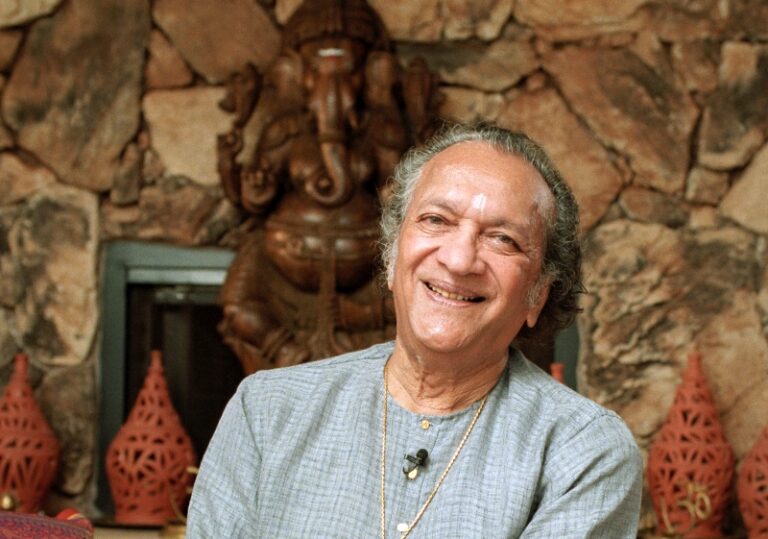
Ravi Shankar is not only one of the most famous Indian classical musicians in the world,he is also one of the best. His remarkable achievement has been to open up the mysteries of the raga to a worldwide audience in a way that has crossed all cultural and musical barriers. He has collaborated with many leading musicians,from Yehudi Menuhin to the Beatles,and has played at pop festivals and in classical concert halls. His compositions include music for film,concertos for sitar and orchestra,and work with electronics and instruments. He was a trail-blazer for world music,and has become a member of India’s upper house of parliament,the Rajya Sabha. He has achieved all this whilst remaining a supreme exponent of the centuries-old tradition of raga playing.
Biography
At the age of ten,in 1930,Ravi Shankar moved to Paris from his native India. There he joined his brother,the legendary dancer Uday Shankar,in introducing Indian performing culture to the west. Between 1932 and 1936 Uday Shankar’s troupe,with Ravi Shankar performing as both dancer and musician,toured Europe and the United States. In 1935 Ustad Baba Allaudin Khan joined the troupe for a year,beginning a profound influence on the shape of Ravi Shankar’s life. For almost seven years from 1938,Shankar learnt sitar as Ustad Baba Allaudin Khan’s disciple – the traditional way of passing the skills of raga from generation to generation.
Ravi Shankar’s subsequent global fame could not have been achieved without such a solid foundation. During the 1940s and 1950s he performed and composed in India,becoming a household name through his celebrated sitar recitals and broadcasts on All-India Radio,where he was Director of Music between 1949 and 1956. He also composed and directed music for many influential films,such as Satyajit Ray’s Apu Trilogy,and mounted large-scale stage productions including a musical version of Jawaharlal Nehru’s Discovery of India. His popular song settings,such as Mohammed Iqbal’s patriotic poem Sare Jahan Se Accha,were known to all and he composed many original ragas.
The gradual shifting of postwar cultural values in the west meant that the audiences of the 1950s were more willing than ever to explore unfamiliar forms of music. The established classical orthodoxies were being replaced with a more experimental outlook. Popular music found a new form in rock and roll. Jazz became increasingly free in its approach to improvisation. Against this background,Shankar’s tours as a solo sitarist across Europe,Canada and the United States were a great success with audiences and musicians alike. A number of other leading performers publicly embraced him,including Yehudi Menuhin,who performed with Shankar at the 1958 UNESCO music festival in Paris and went on to become a great champion of Indian music in the west.
Menuhin,who has described Shankar as one of the three finest musicians he knew,said: ‘Ravi Shankar has brought me a precious gift and through him I have added a new dimension to my experience of music. To me,his genius and his humanity can only be compared to that of Mozart.’ Perhaps it was Shankar’s Brahmin ancestry which enabled him to make such connections with western music. European theoreticians in the Middle Ages had borrowed extensively from Arabian music,which had itself adopted both technical and notational practices from the Brahmins,via the Persian Empire. Ravi Shankar acknowledges this connection,both in his writings and more directly through his performance,especially when it combines with folk and popular music.
The connection became clearly visible in Ravi Shankar’s performances at three big pop festivals: the Monterey Pop Festival in 1967,the Woodstock Festival of 1969,and the Concert for Bangladesh,1971. For the hippie generation,his music articulated an approach to life based not on material values,but on inner development. His presence and his music radiated a positive energy which was perfectly in tune with the aspiration to universal love. The classical raga,with its constant movement away from and back to the drone,evoked a spirit of liberation and a notion of oneness which seemed absent from the dualistic world of Western science and philosophy.
At Woodstock,Ravi Shankar shared the stage with George Harrison,whose introduction of the sitar into the Beatles’ Norwegian Wood started a trend for pop songs underpinned by the characteristic shimmer of this instrument. Harrison’s association with Shankar continues to the present day. He has produced and participated in many projects,including the albums Shankar Family & Friends,1973,Shankar Project: Tana Mana,1987,and most recently Ravi in celebration,1996. The Tana Mana album reveals Ravi Shankar’s interest in experimentation,combining the traditional sound of the sitar with new technologies and techniques.
George Harrison has described Ravi Shankar as ‘the Godfather of World Music’. Shankar has written music for flute,shakuhachi,koto and many other instruments,as well as composing two Concertos for sitar and orchestra,in 1971 and 1981. His music has the quality of being able to unify different cultures – in 1988 he played at the Palace of Culture in the Kremlin with over 140 musicians from India and the Soviet Union,just a few months after a triumphant performance at New York’s Carnegie Hall. Shankar is still touring,now with his daughter Anoushka; still opening the ears and souls of millions to the wonders of the raga.
Andrew Hugill
Chronology
Dharti Ke Lal (film music)
Neecha Nagar (film music)
Swarna (raga) and Jayanti (tala) composed for 50 years of Indian Independence
Awarded the Praemium Imperiale Prize for Music,Japan Art Association,Tokyo
-
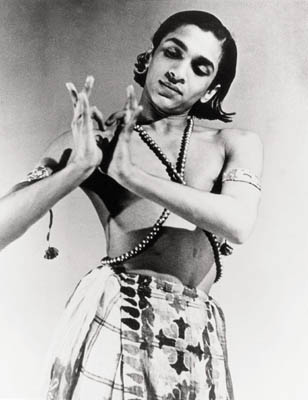
Ravi Shankar, dancer, 1937
-
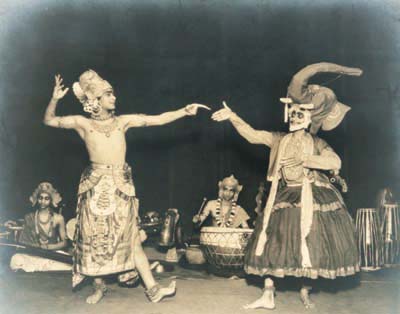
The Shankar Brothers Dance Troupe,
-
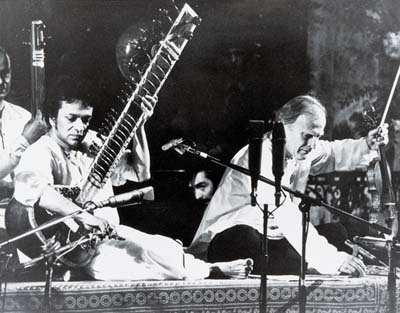
Ravi Shankar performing with Yehudi Menuhin
-
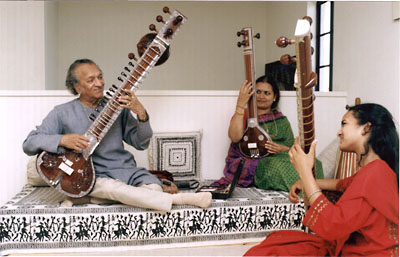
Shankar at home
-
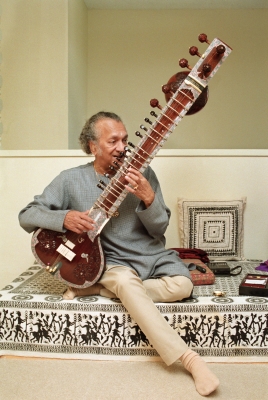
Shankar at home

